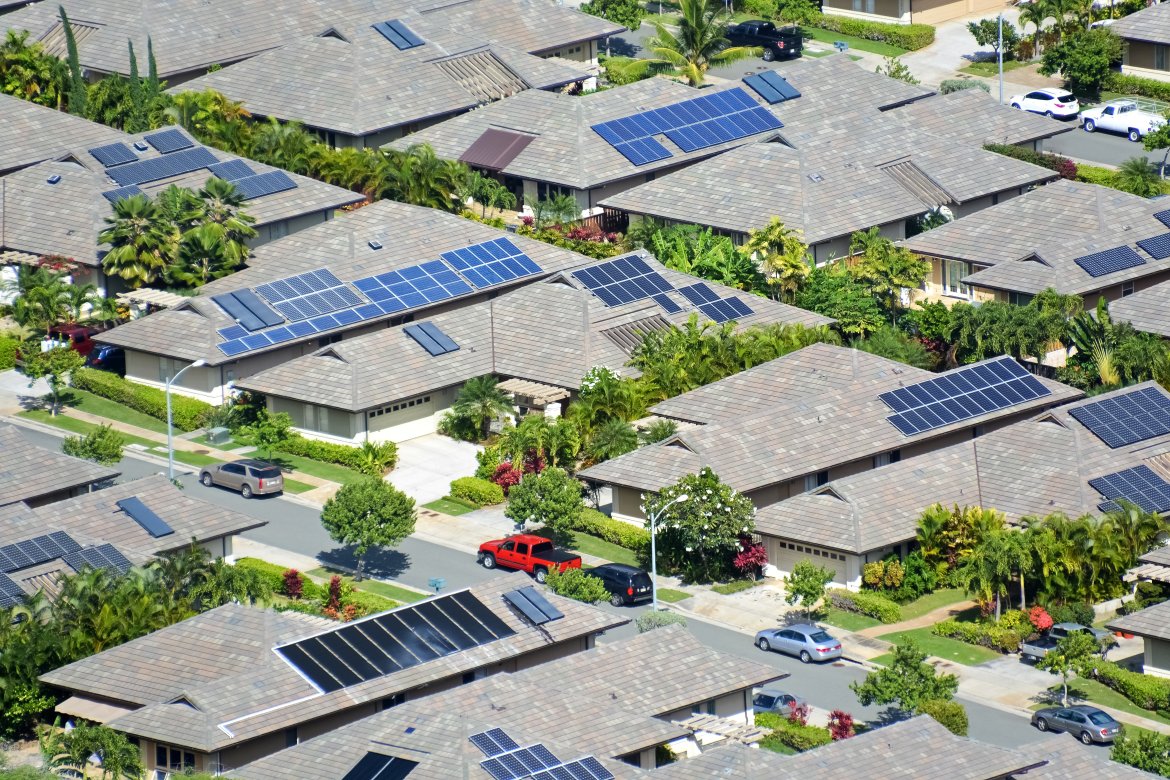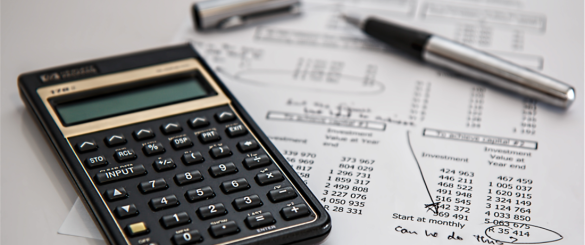Solar PV for Home and Business
Quick Links to content on this page:
Different ways to use Solar PV in your Home or Business
Deciding how to use Solar PV in your home or business
How useful are Solar PV systems? - what they can and can’t do.
The Financial Viability of Solar PV - how much does it cost?
Rooftop solar PV has become a cost-effective, carbon-free and sustainable form of electricity generation for businesses and households. Solar PV panels convert sunlight into electricity that can be used to power your house or business. Solar PV installations across towns and cities are also referred to as Small Scale Embedded Generation or SSEG, as each individual Solar PV installation is usually small in size (under 1MW but not more than 100MW) and is installed on the customer’s side of the electricity meter making them embedded across the municipal electricity distribution grid.
Most Western Cape municipalities will also allow you to feed excess electricity produced by your Solar PV system into their electricity distribution grid and get a rebate against your electricity bill.
Solar PV panels are usually mounted on the roof of a residential, commercial or industrial building - but can also be ground-mounted or integrated into a covered roof structure like a carport.
A Solar PV system is made up of:
- solar panels that generate direct current (DC) from solar energy (sunlight),
- an inverter that converts the direct current (DC) into alternating current (AC) that is used by your buildings electrical system and your devices, appliances etc.
- some solar PV systems also include battery storage.
Different ways to use Solar PV in your house or business:
Solar PV can be used to varying degrees in your house or business:
- from a small solar PV system designed to offset a portion of your electricity usage,
- to a larger system designed to generate most of your electricity demand.
- Solar PV systems can also be paired with battery storage to store some electricity generated during the day for use during the evenings, and days when electricity generation is low because of weather conditions.
- Depending on how the Solar PV system has been set up and available funds, battery storage may also be able to kick in during load-shedding and can either run a few selected essential items or the majority of your appliances, devices and machinery.
Deciding how to use Solar PV in your home or business
The size, layout and configuration of a solar PV system will differ, depending on available finances, how the system will be used, the size of the building, the electricity demand and consumption pattern (load profile) and the ability of the municipal electrical grid-operator to allow the system to be grid-tied and feed back onto the municipal electrical grid.
This guide on Solar PV installations from the City of Cape Town has helpful information on the different types of solar PV installations:
Western Cape Government has funded an industry brief that provides information on the registration and application for connection processes for embedded generation as per the Amended Schedule 2 of the Electricity Regulation Act 4 of 2006 on 5 October 2021. It is the responsibility of local installers/developers to ensure that their clients are informed of the correct procedure to avoid repercussions in the future. The brief can be accessed below here.
Your Solar PV system provider should be able to provide assistance in configuring your Solar PV systems to meet your specific needs.
How useful are Solar PV systems?
It is important to remember that Solar PV alone is not an all-encompassing solution. Depending on what your goals are, Solar PV systems can be implemented with battery storage and in conjunction with other measures, like energy efficiency efforts, to reduce electricity usage significantly, save you significant amounts on your electricity bill and improve the sustainability of your home or business.
Solar PV does:
- Reduce your monthly electricity bill and provides electricity price security in an environment where electricity prices increase above inflation every year.
- Provides electricity supply security for customers, particularly when paired with battery storage.
- Supports Eskom and municipal supply constraints by removing some of the demand on their systems.
- Makes the South African energy mix less carbon-intensive and more sustainable.
Solar PV does not:
- Protect your home or business from load-shedding, unless you choose to include battery storage.
- Necessarily reduce peak demand and cost of peak-time energy. There may be a misalignment between peak PV generation and average peak demand depending on your electricity demand profile), unless battery storage is installed and / or you are on a peak time tariff.
1) Installation Size
- The size of the Solar PV system will impact on the cost of the system. Larger Solar PV systems have a higher capital cost but may produce electricity at a lower cost per unit of electricity (kWh), as fixed costs, such as design and specification, are spread over more panels. The size of your solar system will depend on your electricity usage profile and can be determined by a Solar PV and / or energy efficiency company.
- On average Solar PV systems for households and small businesses are sized between 1 kW and 10 kW, while larger commercial and industrial Solar PV systems can be sized from tens of kW, up to 1000 kW (1MW) or larger depending on electricity demand.
2) Choice of Brand / Manufacturer and System Installers
- Prices for Solar PV components can vary depending on the brand / manufacturer and Solar PV installing company selected.
- To make an informed decision, it is important to shop around, get quotes from different installation companies and evaluate different brands and manufacturers, and their warranties. A Solar PV system is a medium to long term investment and you should put adequate effort into researching your options.
- Some components also need to be imported and will be subject to exchange rate fluctuations.
3) Location, roof type and direction
- The location of the building, its direction related to the movement of the sun, and the type of roof the building has all influence the amount of sun reaching the solar panels, installation costs and how many solar panels you will need.
- For this reason, the Solar PV installation company usually has a process for inspecting or evaluating the building to determine these factors.
4) Financing Method:
- The total cost and time it takes to pay for the Solar PV system (payback period) will depend on what financial mechanism is used to finance the cost of the system, and the client's risk profile or financial standing, and whether the client is a business or household.
- There are various financing methods for households and businesses. Many banks and financial institutions offer loan facilities for Solar PV systems, some allow you to add it to your existing bond. The Solar PV system could also be bought in cash if sufficient funds are available. Some Solar PV / renewable energy companies will pay for the cost of the system if you sign a long-term contract to buy the electricity the system generates. Either your bank and/or the Solar PV company will be able to provide some guidance on this.
- Information from GreenCape, in partnership with the Western Cape Government, for businesses on the business case for Solar PV, and Energy / Battery Storage, as well as financing methods, is available at these links:
5) Current electricity price / tariff:
- As electricity prices continue to increase, the monthly electricity savings that can be made from having a Solar PV system also increase and reduces the time it takes to reach the break-even point where your total electricity savings equal the cost of the Solar PV system, also known as the solar payback period. Beyond this point, any electricity generated by your Solar PV system is effectively free.
Every year more and more businesses and homeowners are discovering the benefits of investing in solar energy. Installing a Solar PV (photovoltaic) system on your roof will not only save you money in the short run but also offers long-term rewards.
1) Save on your power bill:
The repayment of a solar PV system is close to 5 years, depending on certain factors like your electricity demand and your current electricity tariff structure. With solar panels that have a 20 - 25 year production warranty, it’s very much like buying 25 years’ prepaid electricity at 5 years’ cost.
2) Benefit from a feed-in tariff:
The majority of the municipalities in the Western Cape allow you to earn a rebate against your electricity bill for extra electricity your Solar PV system may feed into the municipal grid. This will allow you to save even more money on your electricity bill over and above savings obtained from reduced electricity usage.
3) Solar panel tax incentive for individuals
The National Government proposed this programme to encourage households to invest in clean electricity generation capacity which can supplement the electricity supply. The incentive will only be available for 1 year (1 March 2023 to 29 February 2024) to encourage investment as soon as possible. This document sets out the basic characteristics and requirements for the solar panel incentive announced by the Minister of Finance on 22 February 2023
4) Installation is tax-deductible:
Section 12B of the Income Tax Act of 2016 provides for an accelerated depreciation allowance on the entire cost of a solar photovoltaic system under 1 megawatt. A maximum of 28% of a PV system’s cost can be saved in the first year through a reduced tax bill.
5) Stop load-shedding (with battery storage):
Solar PV systems with battery storage can be more expensive and increase the repayment period but have the ability to continue powering your building during load-shedding. The extent to which it can continue powering your building depends on how much battery storage has been included and your budget. Some opt for smaller, cheaper storage to run only essential equipment, while others opt for larger, more expensive storage capable of power more equipment.
6) Improved Sustainability - Solar PV fights Climate Change and improves Human Health
The vast majority of South Africa’s electricity comes from coal power stations, which release large amounts of carbon dioxide and other Greenhouse Gases (GHGs) that are responsible for heating the earth’s climate resulting in various negative impacts. Solar PV systems generate electricity without emitting any carbon dioxide or other GHGs. reducing the total amount of GHGs being emitted, preventing further heating of the climate and resulting in increased sustainability. It also reduces air pollution associated with your energy use which improves human health and wellbeing.
For any other energy-related assistance, please contact 110Green@westerncape.gov.za or go to our contact us page here.


